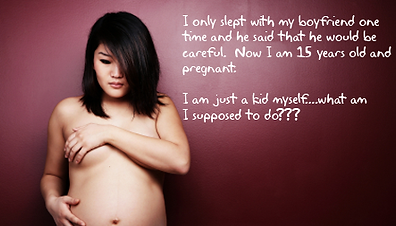How can schools get involved?
Because young people spend so much time in school, it is appropriate to ask what this major institution can do to help prevent teen pregnancies—especiallywhen school failure, school disengagement, and dropping out are principal predictors of this problem.
At the same time, schools have become battle grounds in many communities, the sites of intense struggles over many issues, such as teacher competence, student scores and academic performance, safety, vouchers, and sexuality education. There are ways in which schools can help, many of which are not at all controversial and are
directly consonant with their core mission of education. This chapter describes five strategies that schools can pursue. These strategies help give students support, knowledge, and a sense of the future, all of which will help them delay sexual activity
and avoid unprotected sex.
Several of these strategies will be acceptable to many communities, others less so. Some schools will have the resources and time to concentrate on only one type
of intervention; others can do several simultaneously. A few schools are already doing all of them. Communities will choose those activities best suited to their own values, their own children, and their own schools. However, regardless of which activities are chosen, parent involvement is critical. The five strategies are:
• promoting educational success and providing an enhanced sense that life holds positive options;
• helping youth create and maintain strong connections to parents and other adults;
• providing knowledge, reinforcing positive social norms, and enhancing social skills through various types of abstinence or sex education;
• offering contraceptive services (either in school or nearby) or making referrals for them; and
• carrying out multiple approaches through school/community partnerships.
Promoting educational success and providing an enhanced sense that life holds positive options
Young people are more likely to avoid teen pregnancy when they believe in a positive future for themselves. Schools and communities must formulate powerful strategies for those young people who live on the margins, who do not have nurturing families, and who live in disadvantaged communities. These very high-risk young people must be
convinced that delaying parenthood will have benefits, and that not having a baby will improve their chances in life.
But this strategy is not just a matter of motivating young people to abstain from sex until they are older or to avoid unprotected sex. It is a matter of changing their circumstances so that they truly do have access to quality education and employment opportunities, so they can set and meet high goals for their lives, so that they feel that the future holds the promise of positive options.
Teachers, guidance counselors, and other school personnel are in an excellent position to identify young people who are at high risk of teen pregnancy. One sure marker of vulnerability is being left back in school. Young people who are two or more years older than their class- mates are more likely to drop out and become parents while teenagers. Once high-risk teens are identified, it is essential to make sure that they receive early and intense interventions that will help them overcome the odds.
Many school systems have programs targeted to high-risk youth. There are thousands of alternative schools, schools-within-schools, mentoring programs, full-service community schools, and special projects that attempt to give needy young people individual attention and that tailor classroom experiences for different learning styles.Many of these schools are open from early in the morning until late at night and offer an array of health, mental health, social, and recreational services for the student and his or her family.






